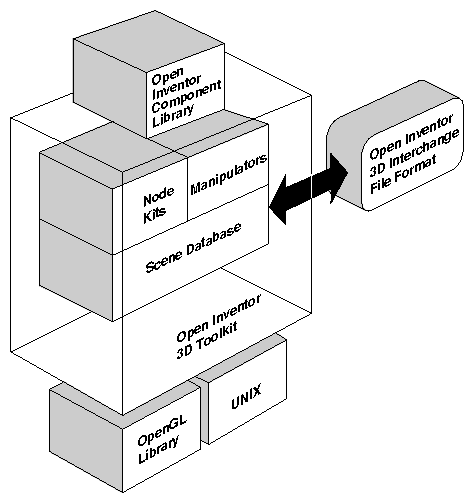The Inventor Mentor introduces graphics programmers and application developers to Open Inventor, an object-oriented 3D toolkit. Open Inventor is a library of objects and methods used to create interactive 3D graphics applications. Although it is written in C++, Inventor also includes C bindings.
Open Inventor is a set of building blocks that enables you to write programs that take advantage of powerful graphics hardware features with minimal programming effort. Based on OpenGL, the toolkit provides a library of objects that you can use, modify, and extend to meet new needs. Inventor objects include database primitives, including shape, property, group, and engine objects; interactive manipulators, such as the handle box and trackball; and components, such as the material editor, directional light editor, and examiner viewer.
Inventor offers the economy and efficiency of a complete object-oriented system. In addition to simplifying application development, Inventor facilitates moving data between applications with its 3D interchange file format. End users of 3D programs can cut and paste 3D scene objects and share them among a variety of programs on the desktop.
As shown in Figure 1.1, “ Inventor Architecture ”, Inventor's foundation is supplied by OpenGL and UNIX. Inventor represents an object-oriented application policy built on top of OpenGL, providing a programming model and user interface for OpenGL programs.
The Inventor toolkit is window system–independent. A component library is helpful for using Inventor with specific window systems. This book describes one component library provided with the toolkit, which facilitates programming in Inventor using Xt windows and events. A companion to this book, The Open Inventor Toolmaker, provides details on how to extend Inventor to work with other window systems.
